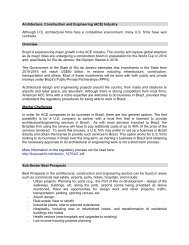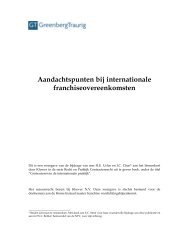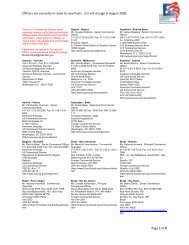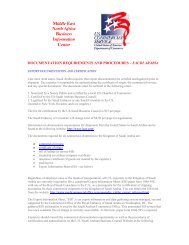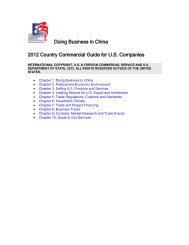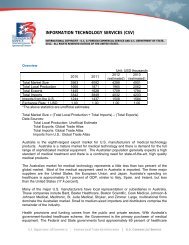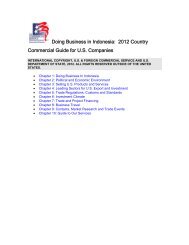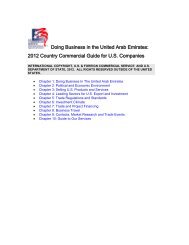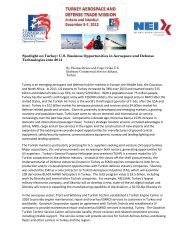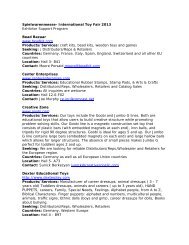Healthcare Technologies Resource Guide - Export.gov
Healthcare Technologies Resource Guide - Export.gov
Healthcare Technologies Resource Guide - Export.gov
You also want an ePaper? Increase the reach of your titles
YUMPU automatically turns print PDFs into web optimized ePapers that Google loves.
The material has to be sourced from approved plants and the process has to be documented. For more<br />
information, please contact the Foreign Agricultural Service at the U.S. Mission to the European Union.<br />
Environmental Requirements<br />
Growing mountains of waste of electrical and electronic equipment have forced the EU to consider ways<br />
to reduce, recover and recycle packaging and appliances. Also, the use of hazardous substances has led<br />
to environmental damages; therefore, certain substances such as lead or mercury have been banned.<br />
Those issues have been tackled by the Waste of Electrical and Electronic Equipment Directive (WEEE) and<br />
the Restriction of Hazardous Substances in Electrical and Electronic Equipment Directive (RoHS).<br />
Medical devices will fall under the scope of the RoHS directive in the future (3 years after entry into force<br />
of the text for medical devices, 5 years after entry into force of the text for IVDs). Others laws such as the<br />
Waste Electrical and Electronic Equipment (WEEE) directive require OEMs to dispose of products they<br />
manufacture in an environmentally responsible way once the equipment reaches end of life. Medical<br />
devices are covered by this directive but with a specific exemption today for “implanted and infected<br />
medical devices.”<br />
For more information, please visit export.<strong>gov</strong>/europeanunion/weeerohs.<br />
Chemical Substances and Mixtures in Medical Devices<br />
Medical devices containing or consisting of chemical substances and mixtures are subject to specific<br />
requirements under the Registration, Evaluation, Authorization and Restrictions of Chemicals (REACH)<br />
Regulation and the Classification, Labeling and Packaging of substances and mixtures (CLP) Regulation.<br />
REACH entered into force on June 1st, 2007. It changes the former legislative framework for chemicals<br />
to ensure a high level of protection of human health and the environment. REACH makes industry<br />
responsible for assessing and managing the risks posed by chemicals and providing appropriate<br />
safety information to their users. Under REACH, the EU can also take measures to ban the use of highly<br />
dangerous substances. CLP aligns previous EU legislation on classification, labeling and packaging of<br />
chemicals to the UN GHS (Globally Harmonized System of Classification and Labeling of Chemicals).<br />
U.S. Commercial Service <strong>Healthcare</strong> <strong>Technologies</strong> <strong>Resource</strong> <strong>Guide</strong> | 2012–2013<br />
37



